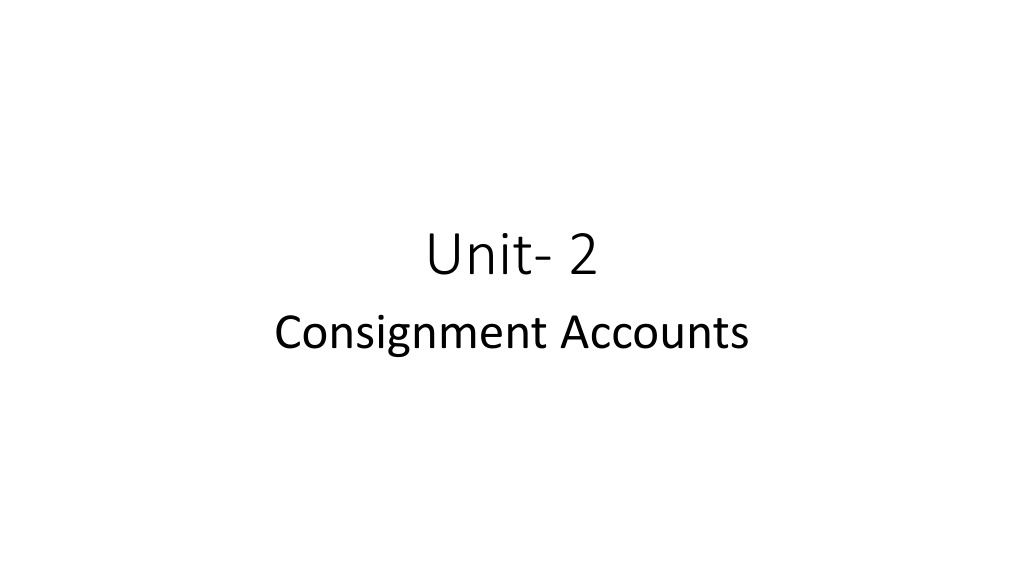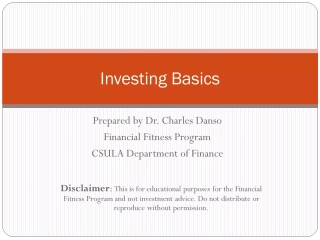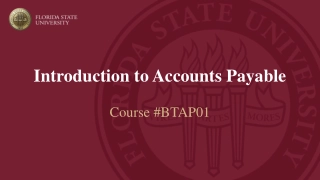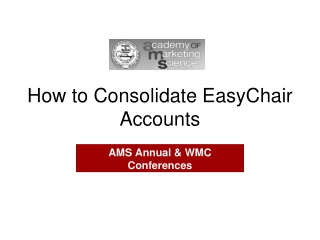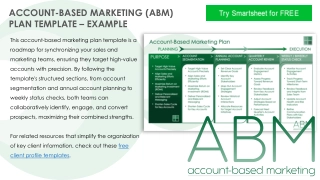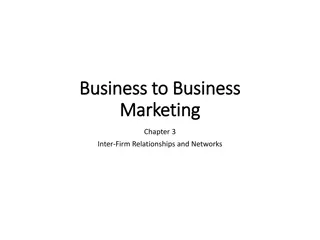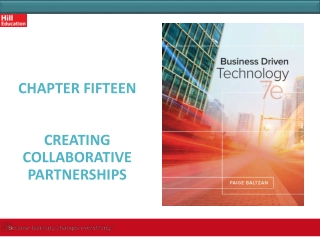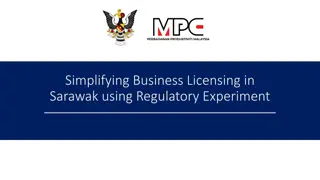Understanding Consignment Accounts in Business
Consignment accounts involve the sending of goods by a consignor to a consignee for sale on the consignor's behalf. The consignor remains the owner of the goods until they are sold, and the consignee sells the goods, collects money from customers, and receives commissions. Various types of commissions may be given to the consignee, such as ordinary commission, del credere commission, and overriding commission. Pro-forma invoices are used to detail the goods sent on consignment.
Download Presentation
Please find below an Image/Link to download the presentation.
The content on the website is provided AS IS for your information and personal use only. It may not be sold, licensed, or shared on other websites without obtaining consent from the author. Download presentation by click this link. If you encounter any issues during the download, it is possible that the publisher has removed the file from their server.
Presentation Transcript
Unit- 2 Consignment Accounts
Meaning of consignment a batch of goods destined for or delivered to someone. "consign" means "to send"
1. Consignor The owner of the goods who sends the goods to an agent for sale. 2. Consignee Who sells the goods for the consignor. Sells the goods and collects the money from the customers. Will pay the consignor the net proceeds (Proceeds Expenses Commission) and provide the consignor an account sales showing all the proceeds and expenses. 3. Goods sent on consignment Goods sent on consignment are the property of the consignor until the goods are sold. The consignor should include all the unsold goods on consignment in his closing stock.
Consignment Consignor Consignee Owner of the goods and also called as principal Is the seller of the goods and also called as agent
whats does they do Consignor does Sends goods to consignee to sell them On his behalf On commission basis Consignee does Receive goods From consignor sell them to customers On cash or credit basis gets commission and reimbursemenr of his expense.
Different types of commission given to consignee under consignment Such commission is paid in lieu of services rendered by the consignee in the form of selling the goods. Theoretically, there are three types of commission: Ordinarycommission: Ordinary commission is the fixed % of commission paid by the consignor to the consignee calculated on the total sales made by the consignee. Del Credere Commission: It is a special commission given by the consignor to the consignee. generally consignee is not allowed to sale goods on credit basis. If he is allowed to sell goods on credit he is held responsible to collect money from debtors When this commission is paid, the consignee has to bear the loss of bad debts
Overriding Commission: Commission given to the consignee in addition to the normal commission Purpose of such incentive is to motivate the consignee to create market for new products. Sometimes, this additional commission is allowed to consignee where certain sales limits have been exceeded.
Pro-forma invoice A Pro-forma invoice is a document prepared by the consignor which is sent to the consignee along with the goods. It contains the details with respect to the quantity of goods sent, rates at which the goods are sent and other terms and conditions for sending the goods on consignment.
Account sale Account sale Account Sales. An Account sale is a statement prepared and sent by the consignee to the consignor. It contains the details with regard to the quantity of goods received, sales made, expenses incurred, commission, amount sent and the balance payable by consignee to the consignor.
Difference PROFORMA INVOICE ACCOUNT SALE It is prepared by the consignor and send along with the goods send on consignment The instrument contains a description of goods, i.e. quantity, price, weight, kind and other specifications. It is a declaration by the seller to provide the products and services to the buyer on the specified date and price. Account sales is a report or statement that shows the price at which the goods are sold, expenses incurred by the consignee on behalf of the consignor, consignee's commission and the net balance for which the consignee is liable.
Format of Account sale Account sale statement of .. Particular Amount Sales xxxxx Less: expenses xxx commission Xxx XXXXX Less: advance if any Xxx Balance due and enclosed draft XXXXX
Difference Consignment Sale When the goods are delivered to the agent by the owner for selling purposes, is known as Consignment. Consignor and Consignee are the parties in the consignment Relationship between parties Principal and Agent Possession is transferred, but ownership is not transferred, until they are sold to the final consumer. The consignee can return the unsold stock to the consignor. Risk of loss is borne by consignor Expenses incurred are met by consignor Consideration is the Commission to the agent. When the goods are delivered to the agent by the owner for selling purposes, is known as Consignment. Seller and Buyer are the parties in the consignment Relationship between parties Creditor and Debtor Possession and ownership Both are transferred with the transfer of goods. The buyer cannot return the goods to the seller until and unless the seller agrees to the same. Risk of loss is borne by buyer Expenses incurred are met by buyer Consideration is the Profit to the seller.
Accounting treatment : Transcations In the books of consignor In the books of consignee Goods sent on consignment Consignment a/c dr To goods sent of consignment No entry For expenses incurred by consignor Consignment a/c dr To Bank a/c No entry For the advance paid by the consignee Bank/ Bill receivable a/c dr To consignee a/c Consignor a/ dr To Bank/ Bills payable When consignor get the bills discounted with the bank Bank a/c dr Discount a/c dr To Bills Receivable a/c No entry For the expenses incurred by the consignee Consignment a/c dr To consignee a/c consignor a/c dr To bank a/c For the sales made by consignee Consignee/ consignment debtors a/c dr To consignment a/c Bank a/c dr To consignor For the commission payable to the consignee Consignment a/c dr To consignee a/c consignor a/c dr To commission a/c
Transcations In the books of consignor In the books of consignee For consignment stock (unsold stock) Consignment a/c dr To consignment a/c No entry For profit on consignment Consignment a/c dr To profit/ loss a/c No entry For loss on consignment Profit /loss a/c dr To consignment No entry For abnormal loss Abnormal loss a/c dr To consignment a/c No entry For removing loading in invoice price when the goods sent on invoice price Goods sent on consignment a/c dr consignment a/c No entry For removing loading in consignment stock Consignment a/c dr To consignment stock reserve a/c No entry For del credere commission given by consignor------bad debts borne by consignee No entry Bad debt a/c dr To Commission a/c For delcredere commission not paid by the consignor------- loss of bad debts borne by consignor Bad debts a/c dr To consignment debtor s a/c No entry
Valuation of consignment/closing/unsold stock Particulars Value of unsold stock ( unsold units* price per unit) Add: proportionate direct/non recurring expenses of consignor Amount xxxx xxx xxxx xxx xxxx Add: proportionate direct/non recurring expenses of consignee Note: (Direct/ non-recurring) Total 1) All the expenses incurred by consignor are included in direct expenses 2) In case of consignee till the goods reached to the godown of consignee the expenses incurred are direct. Rest will be indirect
Special items treatment: Abnormal loss: This type of loss is an avoidable loss because it does not arise due to the nature of the goods. Such loss may arise due to hard luck of consignor (i.e. destruction of goods by fire, an accident or theft). Such losses are more or less abnormal and, in any case, do not occur frequently. Note: calculation of abnormal loss is similar to that of consignment stock Invoice price: when the goods are sent to consignee at a price higher than the cost price ,it is termed as invoice price. (Cost Price + Profit)
ledgers to be maintained under consignment In the books of consignor Consignment a/c ( Nature of a/c: Nominal account) Consignee a/c ( Nature of a/c: Personal account) Goods sent on consignment a/c ( Nature of a/c: Real account) In the books of consignee Consignor a/c ( Nature of a/c: Personal account) Commission a/c ( Nature of a/c: Nominal account)
In the books of consignor Consignment a/c Particulars Amount Particulars Amount To goods sent on consignment Xxxx By Consignee(sale) Xxxx To Bank (expenses of consignor) Xxxx By consignment stock (unsold stock) xxxx To consignee (expenses & commission) Xxxx By goods sent on consignement (loading in gsc) Xxxx To consignment stock reserve (loading in unsold stock) xxxx To profit and loss a/c (profit) Xxxx Xxxx Xxxxx
Consignee a/c Particulars Amount Particulars Amount To consignment (sale) Xxxx By Bank / B/R (advance) Xxxx By consignment (expenses) xxxx By consignment (commission) Xxxx By Bank / B/R (final remittance) xxxx Xxxx Xxxxx
Goods sent on consignment a/c Amount Particulars Particulars Amount To consignment (loading) Xxxx By consignment Xxxx To Trading / Pruchases a/c xxxx Xxxx Xxxxx
In the books of consignee Consignor a/c Particulars Amount Particulars Amount By Bank / B/P (advance) Xxxx By Bank (sale) xxxx By Bank (expenses) xxxx By Commission Xxxx By Bank / B/P (final remittance) xxxx xxxx Xxxxx Commission a/c Particulars Amount Particulars Amount By Bad debts Xxxx By consignor xxxx By profit / loss a/c xxxx xxxx Xxxxx
